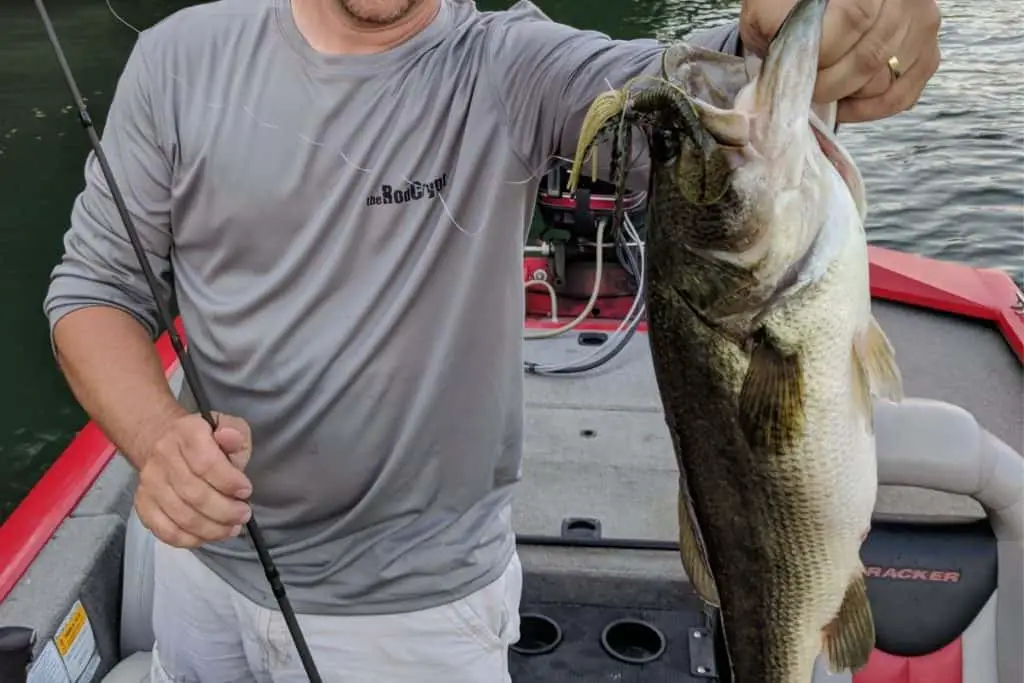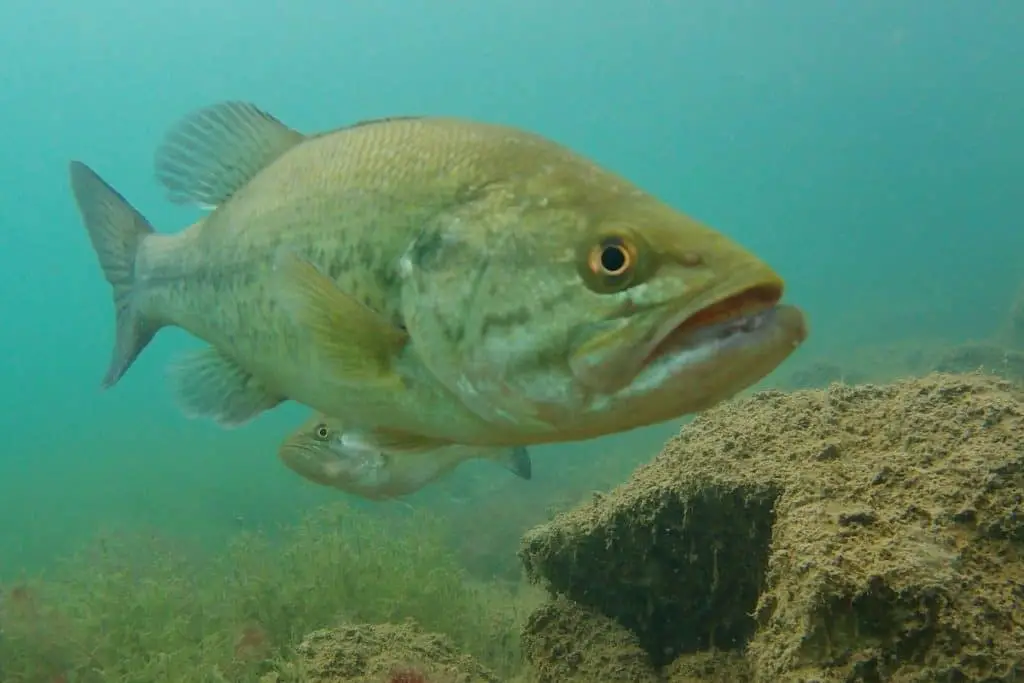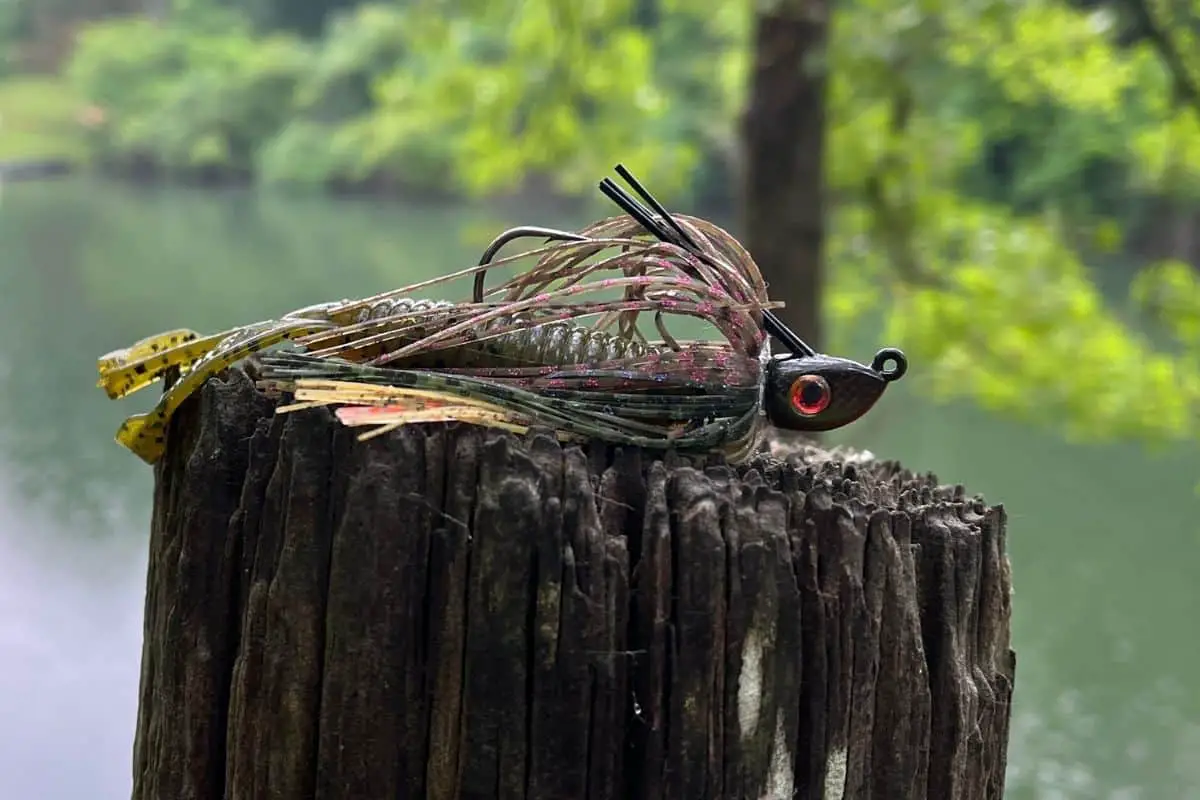Swim jigs are lures that may get the most consistent violent strikes out of all the baits I use. Bass will attack them with fury. Line choice is important to landing those fish.
When fishing swim jigs through heavy vegetation, braided line is the best choice. When fishing around sparse cover anglers have the option of a braid to fluoro leader or straight monofilament.
Understanding the characteristics of each line type will aid anglers in making the best decision.
Characteristics of Each Line Type
| Line Type | Pros | Cons |
| Monofilament | Inexpensive, Easy to handle | Lots of stretch |
| Fluorocarbon | Low-visibility, Abrasion Resistant | Expensive, Wrong knot will snap easily |
| Braid | Very sensitive, Lasts a long time, No-stretch | Expensive, Very Visible |
The Benefits of Braided Line and Swim Jig Fishing
The slender design of a swim jig head makes it ideal for working through weeds.
When a big bass inhales that swim jig while in vegetation, braided line will do two things for anglers.
First, it will transfer energy from your hands to the lure almost immediately. The lack of stretch means the hook will sink right away and the big bass will not be able to turn its head and bury up in the thick stuff.
Second, braided line will cut through most vegetation with ease. It is frustrating to hook a good fish only to lose it because five pounds of weeds cause problems.

Better Swim Jig Action With Braided Line
I use two primary retrieves when using a swim jig – a slow pulse and the Alabama Shake.
The first method is attributed to Tom Monsoor. Tom is a pro fisherman from Wisconsin that many consider the best swim jig angler to ever step foot on a boat.
His goal is to bring the swim jig back as slowly as possible while maintaining its position in the water column. He has been quoted as saying this to himself while retrieving the lure, “Float like a butterfly, sting like a bee.” This famous phrase helps Tom to keep the slow, steady pace he finds so effective.
The second retrieve style, very popular in southern fisheries, is the Alabama shake. This is where the braided line makes a significant difference.
Anglers using this method will hold the rod tip between the 10 o’clock and 11’oclock position while reeling the jig back to them. They will then bounce the lure with slight vibrations from their wrist. The swim jig will dance back to the angler.
This erratic motion can elicit some massive strikes.
The lack of stretch in the braided line is the key element to this type of retrieve.
(Here is a detailed article on braided line.)

Water Clarity and the Impact on Bites When Using Braid
When the fish are aggressive, line visibility doesn’t play much of a factor. When they want it they will eat it.
I wish bass were aggressive all the time. They aren’t.
What makes a swim jig so effective is that the lure presents as an easy meal that triggers the feeding instinct. Think about a bowl of potato chips sitting on the counter in the kitchen. When you walk by, it is too easy to grab one. The same idea applies here.
There are a contingent of pro anglers out there that believe line visibility is not an issue and it doesn’t bother the bass at all. There are others that will say just the opposite.
I fish a lot of crystal clear water. I have better luck with low-visibility line.
When this is the case, I will use a braid for my mainline and then tie on a fluorocarbon leader.
I have fished a swim jig this way for decades and had great success. I still get the responsive action because of the no-stretch braid and low-stretch leader. Plus I feel more confident with the low-visibility of the fluoro in this gin-clear water.
With that said, if I am fishing very heavy weeds in clear water, I will use the straight braid. The thicker vegetation limits the visibility of the fish and I am not as worried about them seeing the line.
Monofilament and Swim Jig Fishing
This is my last choice when using a swim jig. In fact, I rarely use it.
I feel there is too much stretch in the mono and not only does it limit the action, but the give is not something I want when fishing around weeds.
There are anglers that prefer the use of mono because they like a heavy action rod for their swim jig fishing. They feel this immediate response from the rod, paired with the give of the mono works well for them.
You can try it and see what you think, but I prefer one of the two previous lines mentioned earlier.
On the plus side, mono is by far the most economical choice and that may be the most important factor for you.
Final Thoughts
In summary, the more I feel the line is hidden because of cover like vegetation or stained-to-dirty water, the more apt I am to use straight braid.
Otherwise, a braid to fluoro leader is what you will find on most of my swim jig setups in crystal clear water.
Good luck out there and be sure to encourage someone today. You never know how you may change their life forever.
Isaiah 6:8

